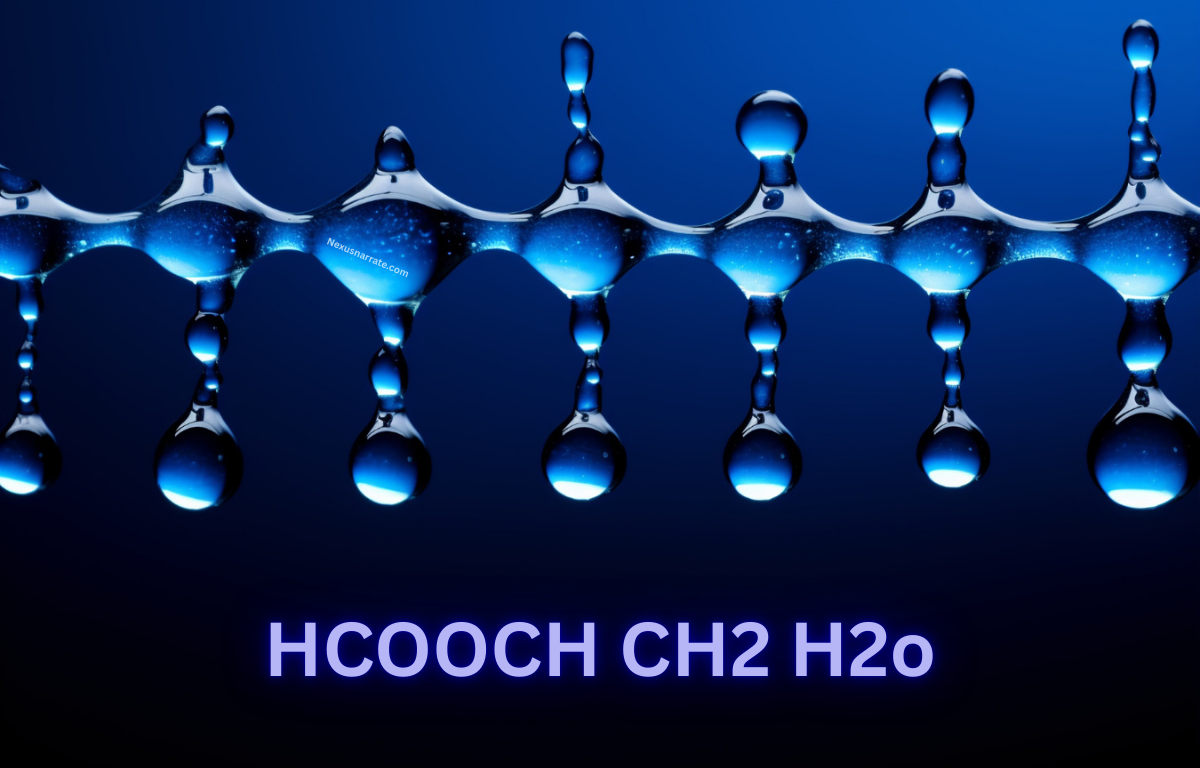Welcome to the fascinating world of molecular interactions! Today, we’re diving into the intricate dance between three key players: HCOOCH CH2 H2O. At first glance, these compounds might seem ordinary. However, their interplay is anything but simple. From unique chemical reactions to vital roles in various applications, this trio showcases chemistry’s beauty and complexity. Buckle up as we explore how HCOOCH interacts with CH2 and water—revealing insights that could change our understanding of molecular dynamics!
The Molecular Dance: How HCOOCH Interacts with CH2 and Water (H2O)
The molecular interaction between HCOOCH CH2 H2O is a captivating process. This trio engages in a series of delicate exchanges that influence their behavior and properties. The presence of water significantly alters the dynamics, allowing for unique hydrogen bonding and solvation effects.
In this dance, HCOOCH acts as a methyl ester derived from formic acid. When it meets CH2 groups, intriguing reactions can occur. These interactions lead to the formation of various intermediate compounds that further enhance our understanding of organic chemistry’s intricacies within biochemical systems.
Understanding the Components of HCOOCH CH2 H2O
HCOOCH, or formic acid methyl ester, is a simple yet fascinating molecule. It consists of carbon, hydrogen, and oxygen atoms that combine to create unique properties. Understanding these components helps in grasping how they interact with other substances like CH2 and H2O.
In this complex molecular dance, CH2 represents methylene groups while H2O stands for water. Each component plays a crucial role in various chemical reactions. The interactions between them can lead to exciting transformations essential for industrial applications and biological processes alike.
Also Read: https://nexusnarrate.com/omnire/
Exploring the Chemistry Behind Formic Acid Methyl Ester and Beyond
Formic acid methyl ester, or HCOOCH, is a fascinating compound. Its structure reveals an intricate balance of functional groups that enable unique interactions with CH2 and water (H2O). This molecule acts as a bridge between simple compounds and more complex chemical systems.
But the exploration doesn’t stop there. The reactions involving HCOOCH can lead to various derivatives essential in organic synthesis. Understanding these pathways opens doors for new applications in materials science and pharmaceuticals, showcasing the versatility of this seemingly simple ester. Each interaction tells a story waiting to be uncovered.
Decoding Misconceptions & Chemistry of HCOOCH CH2 H2O
Many misconceptions surround the interactions of HCOOCH CH2 H2O. Some believe that these compounds behave independently, but their chemistry reveals a more intricate relationship. The molecular dance among them showcases how they influence each other’s properties.
Understanding this interaction is essential for grasping concepts in organic chemistry. For instance, while HCOOCH can react with CH2 to form esters or undergo hydrolysis with water, the nuances of these reactions are often overlooked. Clarifying these relationships helps deepen our comprehension of both theoretical and practical applications in various fields.
Industrial and Biological Applications
HCOOCH, or formic acid methyl ester, plays a pivotal role in various industrial applications. It serves as a solvent and chemical intermediate in the production of pharmaceuticals and agrochemicals. Its ability to enhance reaction rates makes it valuable in organic synthesis processes.
In biological contexts, HCOOCH is recognized for its potential as a metabolic precursor. It can influence cellular processes and support microbial growth in specific environments. Researchers are keen on exploring its roles in biochemistry, particularly regarding energy metabolism and sustainable practices within ecological systems.
Reactions Involving HCOOCH CH2, and Water
The interactions between HCOOCH CH2 H2O are fascinating. These components can undergo various reactions that lead to significant transformations in organic chemistry. For instance, the hydrolysis of formic acid methyl ester (HCOOCH) can produce methanol and formic acid when reacted with water.
In addition to hydrolysis, these compounds may engage in condensation reactions under specific conditions. Here, molecules combine while releasing a small molecule like water. This unique behavior highlights the importance of HCOOCH in both academic research and industrial applications where understanding its reactivity is crucial for innovation.
Safety and Environmental Considerations
When handling HCOOCH CH2 H2O, safety is paramount. Proper protective gear is essential to prevent exposure to chemicals that may cause skin or respiratory irritation. Always work in a well-ventilated area and ensure all equipment is properly maintained.
Environmental considerations are equally important. HCOOCH can be biodegradable under certain conditions but may pose risks if released into ecosystems. Monitoring waste disposal methods helps minimize environmental impact, ensuring these compounds do not harm wildlife or water sources during industrial processes or research activities.
Emerging Research Trends
Recent research on HCOOCH CH2 H2O has shifted towards understanding their interactions at a molecular level. Scientists are exploring how these compounds influence biological systems and environmental processes. This focus offers new insights into metabolic pathways and ecological impacts.
Additionally, innovative analytical techniques are being developed to study the dynamics of these molecules in real-time. Researchers aim to uncover potential applications in green chemistry and sustainable practices. Such advancements could lead to more efficient manufacturing processes or biodegradable materials that benefit both industry and nature.
Conclusion
The interaction between HCOOCH CH2 H2O showcases the fascinating world of molecular chemistry. Understanding how these components dance together not only reveals their intrinsic properties but also opens doors to numerous applications in various fields.
From industrial uses to biological processes, the significance of this trio cannot be overstated. Emerging research continues to unveil new insights into their interactions and potential benefits. As we explore this ever-evolving landscape, it becomes clear that the study of HHCOOCH CH2 H2O is poised for exciting developments ahead. The future holds promise as scientists delve deeper into the intricacies of these molecules and their roles within broader chemical frameworks.







